Contemporary artist Eunhyea Choi works from her abstract visual memoires of time, space and objects. An Asian Curator artist interview.
The ultimate goal of my work is to form a relationship with myriad phenomena derived from real things even though they are not visible, that is the potential communion with them. I structuralise ‘the relationship’ with the phenomenon surrounding me by embodying the phenomenon in a multi-layered form. Through this, I pursue various meanings implied by things that are invisible but real.
Contemporary artist Eunhyea Choi
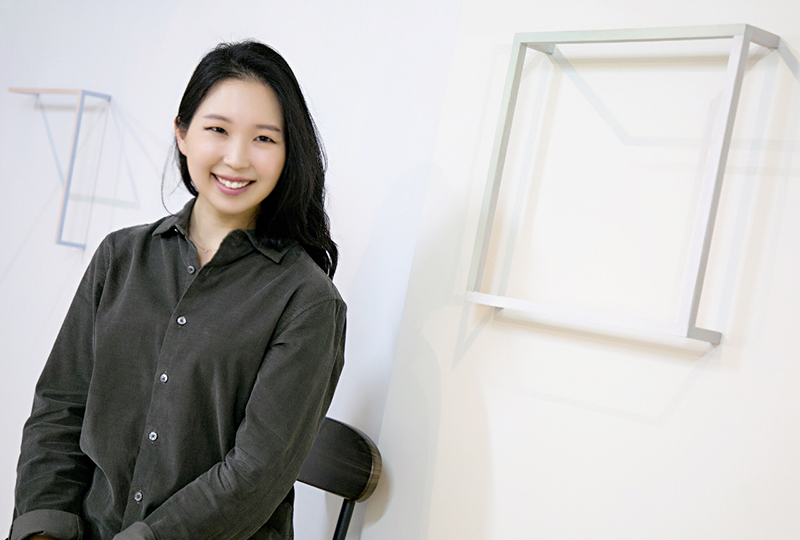
Artist portrait. Contemporary artist Eunhyea Choi.
What brought you to the world of art and how did you start?
I received special education in art since my childhood due to my unique home environment. Nearly everyone in my family is involved in the art world. My late grandfather is a well-known painter in my native country and served as a professor in Seoul. There is this pervasive artistic atmosphere in my house. Due to this, I was always open to discussions with my family about various topics related to art. I consider myself lucky to have a family that has been supportive of my plans to get involved in the art world. They have given me practical advice whenever I have had to make important decisions related to my career.
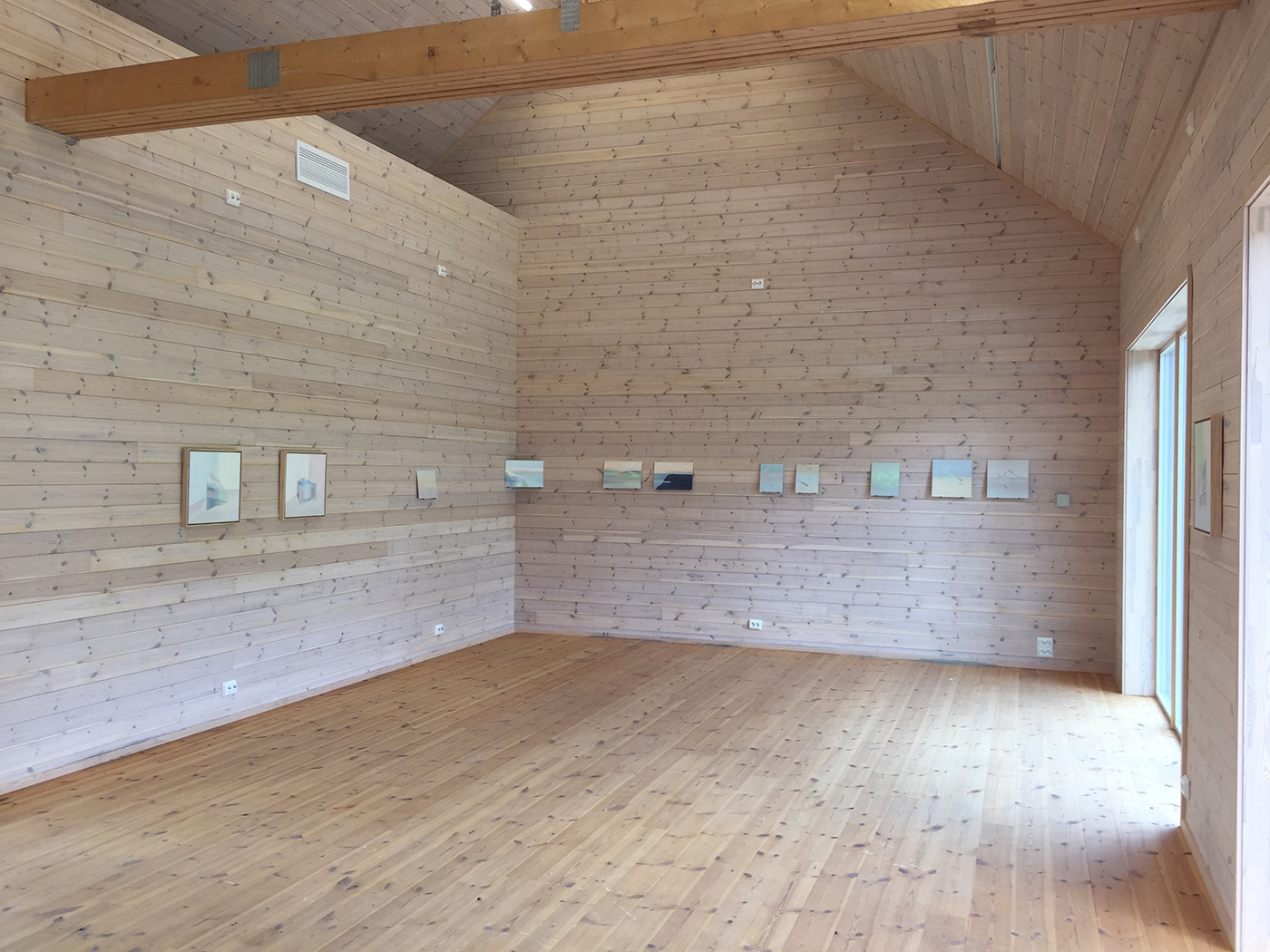
Solo exhibition in Norway.
How do you describe yourself in the context of challenging people’s perspectives via your work and art?
Movements between the momentary and the fluid collected through senses and real things: my work begins with my interests in the relationship between the two.
I visualise the communion between the two worlds created by the non-material energy created in between. That is, the communion created by the organic movement. To express these organic movements, they are interpreted in the form of various relationships with communion and in the form of time. For this purpose, organic movements between visible and invisible things are mainly rendered through the medium of light and shadow. These movements create the endless relationship of creation. They are expressed in a form represented by subtle visual combinations, forms and colours found between the inner world and the objective world. And these movements are reduced to a layer of a meeting between geometric and irregular forms and multi-layered colours. Herein the movements mean continuity that endlessly creates traces and deformations through the movement of time and the unfixed imaginary movements.
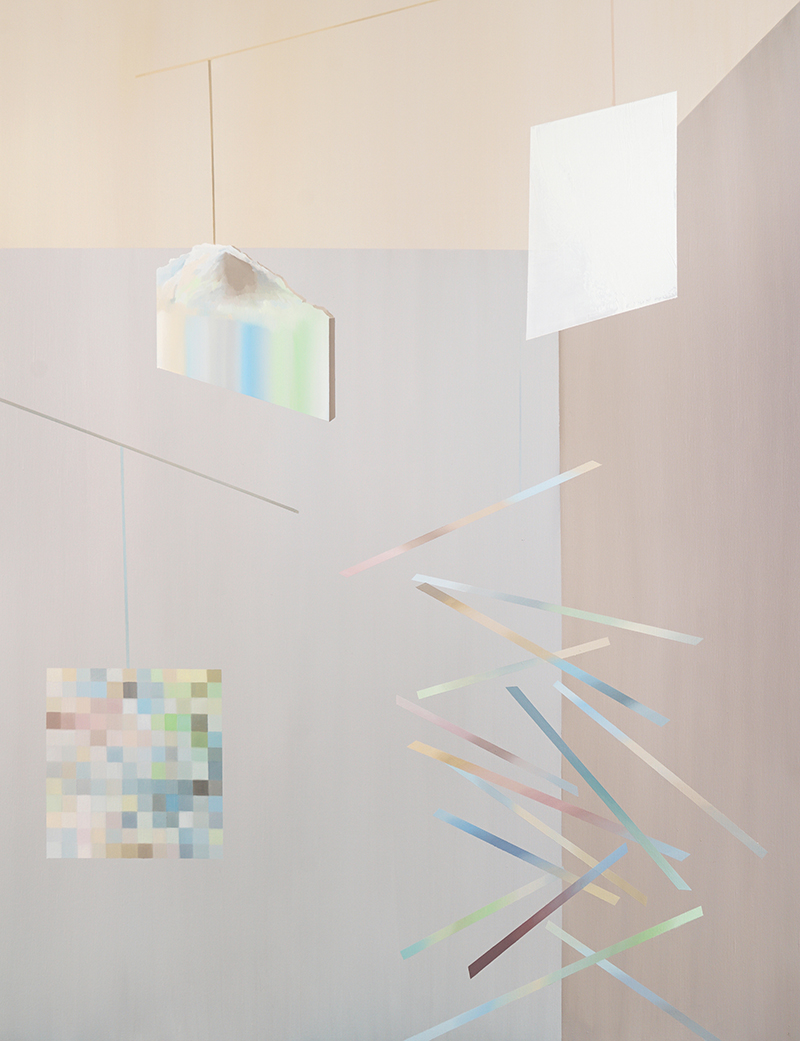
Balanced, oil on canvas. 2018.
How do you deal with the conceptual difficulty and uncertainty of creating new work?
I never feel that uncertain about my work. I am pretty clear in my own mind about what I am doing now and next. But I always try to study deeply and hone my visual skills to make my work more in-depth.
The ultimate goal of my work is to form a relationship with myriad phenomena; derived from real things even though they are not visible, that is the potential communion with them. I structuralise “the relationship” with the phenomenon surrounding me by embodying the phenomenon in a multi-layered form. Through this, I pursue various meanings implied by things that are invisible but real.
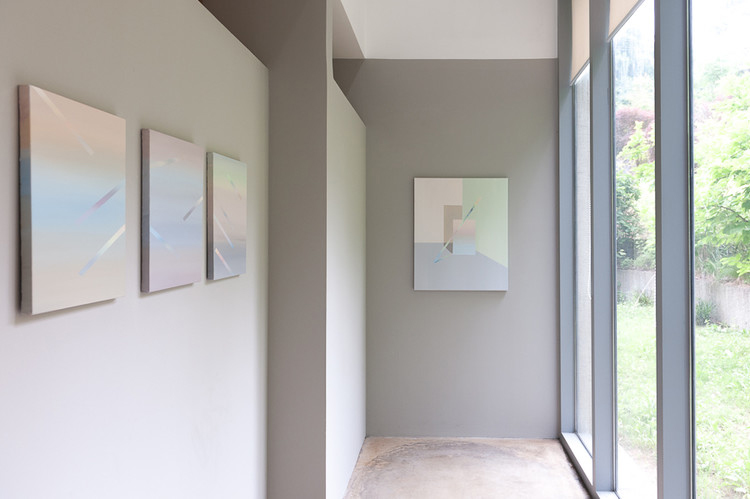
Installation view. Datz Museum of Art, Korea, 2019.
Let’s talk about the evolution of your practice over the years.
My main medium is oil paint. I create space and temporality in the world that I am experiencing in a painting style from the perspective of “continuous multi-layered space”. This is reconstructed into a painting space of an open structure without being embodied according to the principle of representation. This is because the relationship between time and space is expressed as a transcendent realm that cannot be reduced to the centre of space. In the Dialogue series, the creation and depth of multi-layered space are expressed through the “extended plane” that is a combination of the illusion created in the plane and the real object.
Tell us about your commitment to your current medium. What would you call your style?
For example, an abstract space where phenomena and the non-material world are combined is activated by attaching coloured wooden or acrylic rods to the plane of the canvas to distract the boundary between illusion and reality. The shadow that the tool places on the plane as the phenomenon and the reproduced illusions that have fallen at different times are harmonised, making the canvas an open space for a leap into the non-material world.
If in the Dialogue series, the record of the movement of real time, that is, the experience of accumulating time on the canvas and the new perception transcending phenomena based on it, is expressed in an implicit and conceptual way, in Collecting Scenes, Balanced, and Window Seat, the scenes accumulated through experience are expressed in a personal and narrative way through “the movement in the mind”, that is imaginary movement. In this works, new movements that are continuously created through a combination of visible and invisible things are expressed.

Installation view. Datz Museum of Art, Korea, 2019.
Let’s talk about your frameworks, references and process. What inspires you?
The formative experiences collected through perception in my life are combined with my internal view to form paintings. Rather than exploring simple scenes or objects, painting in this way explores scenes or objects focussing on their temporality. The concept of time cannot be separated from the perception of spaces, and it has been consistently addressed importantly in contemporary art. Unlike the dictionary definition, the temporality I think is not something absolute and objective but a transparent continuum with infinite changes, movements, and creation. It is fluid, constantly becomes something else, has new movements as perception changes, and opens up infinite possibilities. Therefore, temporality plays a key role in the process through which I explore works.
Meanwhile, in my works, “light” is an important medium that activates the actions of shapes and colours through the infinite movements and continuous relationships of time and space. I do not focus on the exploration of the nature of light, but take notice of light for its relational role of activating fluid spaces containing the attributes of change. This means not only the light through visual phenomena, but also the inner light that settles in the mind, that is, the invisible light acting as an imaginary pathway to things beyond the visible.

Toned Landscape 2, oil on canvas, 2019.
Let’s talk about your career, or if you prefer artistic journey. What were your biggest learning and hiccups along the way?
After graduating from Seoul Arts High School, I entered Ewha Womans University and majored in painting. I learned to express ideas using visual language and develop conceptual skills for communication, while also taking diverse courses in art history and philosophy in order to broaden my way of thinking.
Also, I have been fortunate enough to have participated in several artist residency programmes across the country. These programmes were pivotal in my career as a professional artist, enhancing my artistic vision, while also improving my professional practices. The residency programmes in Iceland and Norway were especially amazing experiences for me. I was greatly inspired by the beautiful environment.
How does your audience interact and react to you work?
Usually, the audience’s reaction to my work is, “It’s beautiful and peaceful.” People respond very well to colours and shapes in particular. Also many people wonder about the relationship between colours and shapes. There are no correct answers and I expect that my works will be connected with each individual’s life and lead us to the inner space of self-discovery.
What are you looking for when you look at other artists’ work?
When I look at other artists’ work, I am really interested in the composition of visual image and the philosophy. There are many exhibitions that have influenced me that it’s hard to choose. One show that does stand out would be Agnes Martin’s exhibition at the Guggenheim Museum in New York. Here I would like to remember something she said, “When I think of art, I think of beauty. Beauty is the mystery of life. It is in the mind, not in the eye.”
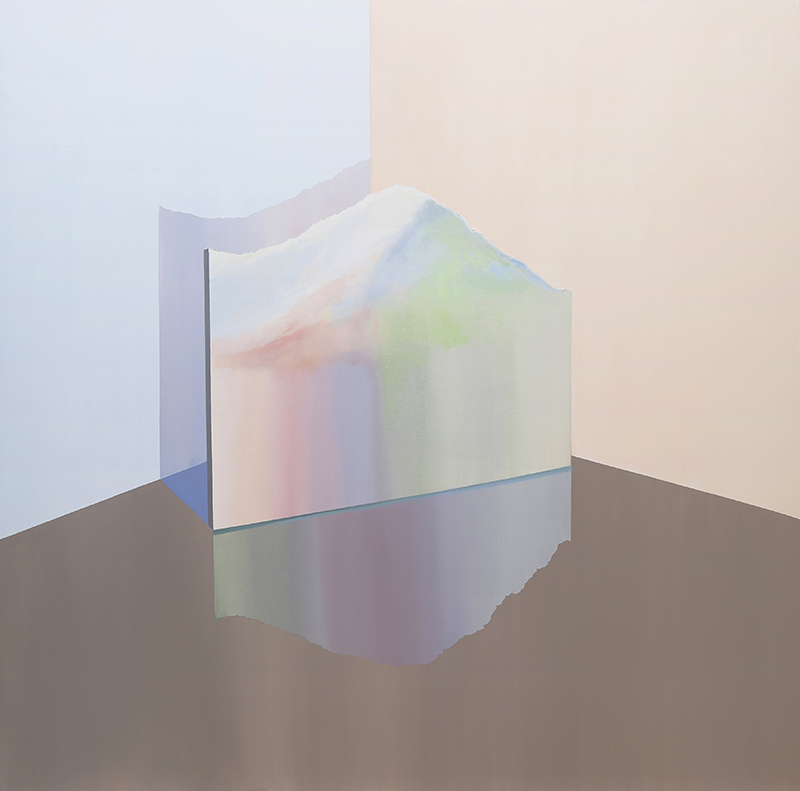
Toned Landscape, oil on canvas, 2019.
Tell us about your studio. What kind of place is it? Could you describe your usual work day in the studio?
In my house, there is a gallery where my grandfather’s art works are exhibited all year round, and I am using a part of that space as my studio. I usually like to get to work early or late at night because I like the quiet atmosphere to concentrate. Then, depending on the work I’m doing, that’s where I have some flexibility. Depending on my mood, I read a book, listen to music, or go back to work. If there is something I really need to work on, I just take a short break and go back to work. I work out of my memory, out of visual memory, sort of abstract memories of times and spaces and objects. So those records are kind of magic. I love to collect photos, objects, sounds related to my memories inside my studio. There are many things that have influenced me.
Is there any topic lately that you would like to be mentored on? Any experiences that have shaped your own creative process? Who are your maestros? Whose journey, shows, and performances would you want to read about?
Currently, I capture middle-points from my experience and focus on re-composing them. These originate from actual obscure landscapes, or start from the act of representing time-space with particular colours or shapes. I am following a process that will open up a window to another world, resulting from the beauty that is in our daily life. I start from the practice of gazing which leads me to a newly formed visual language through the process of mingling potential possibilities and creativity.
For enquiries contact: eunhyea1205@gmail.com
Before you go – you might like to browse our Artist Interviews. Interviews of artists and outliers on how to be an artist. Contemporary artists on the source of their creative inspiration.












Add Comment